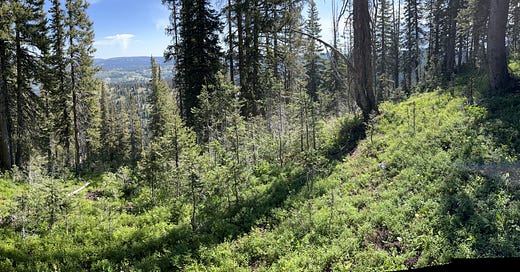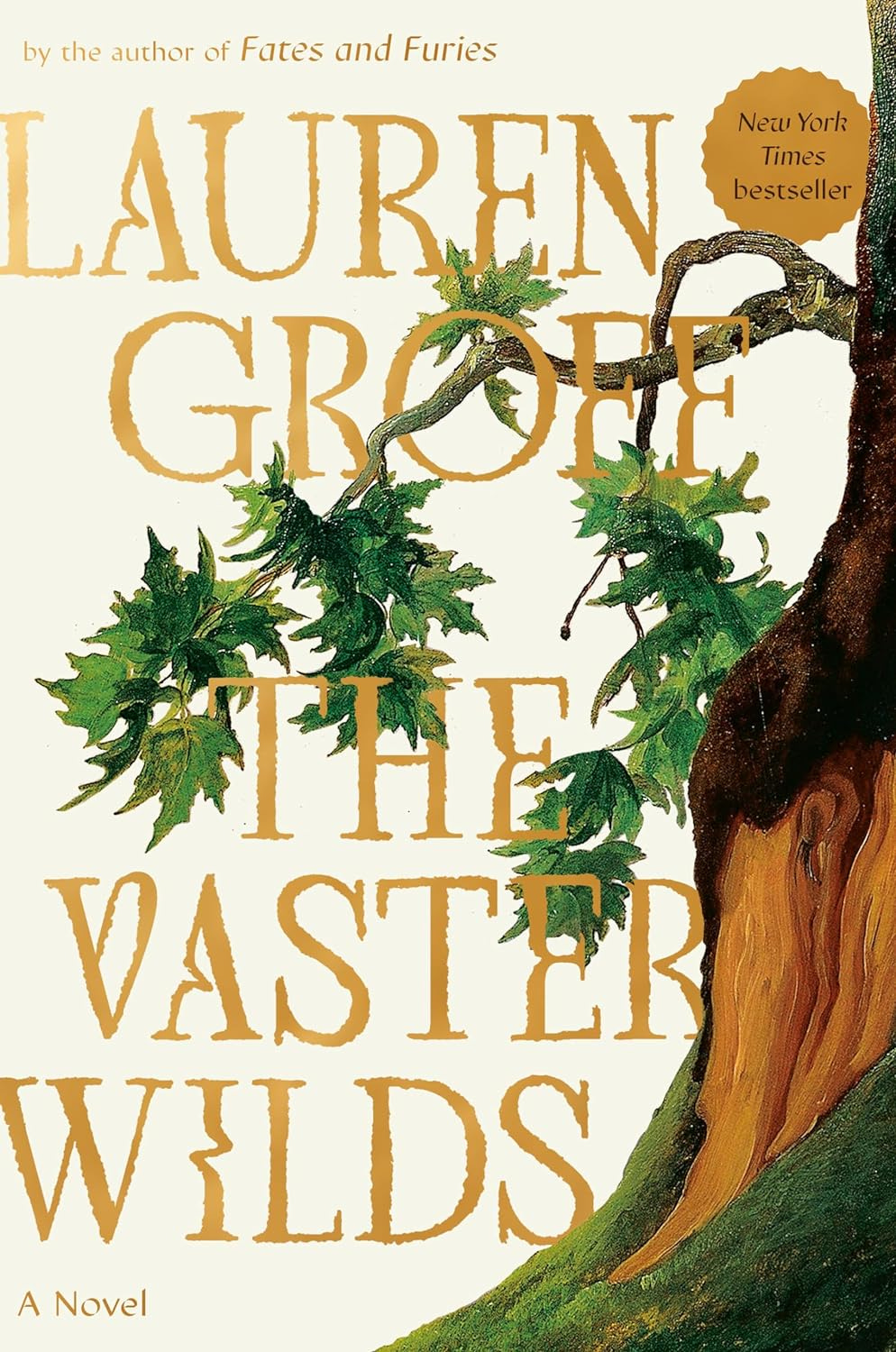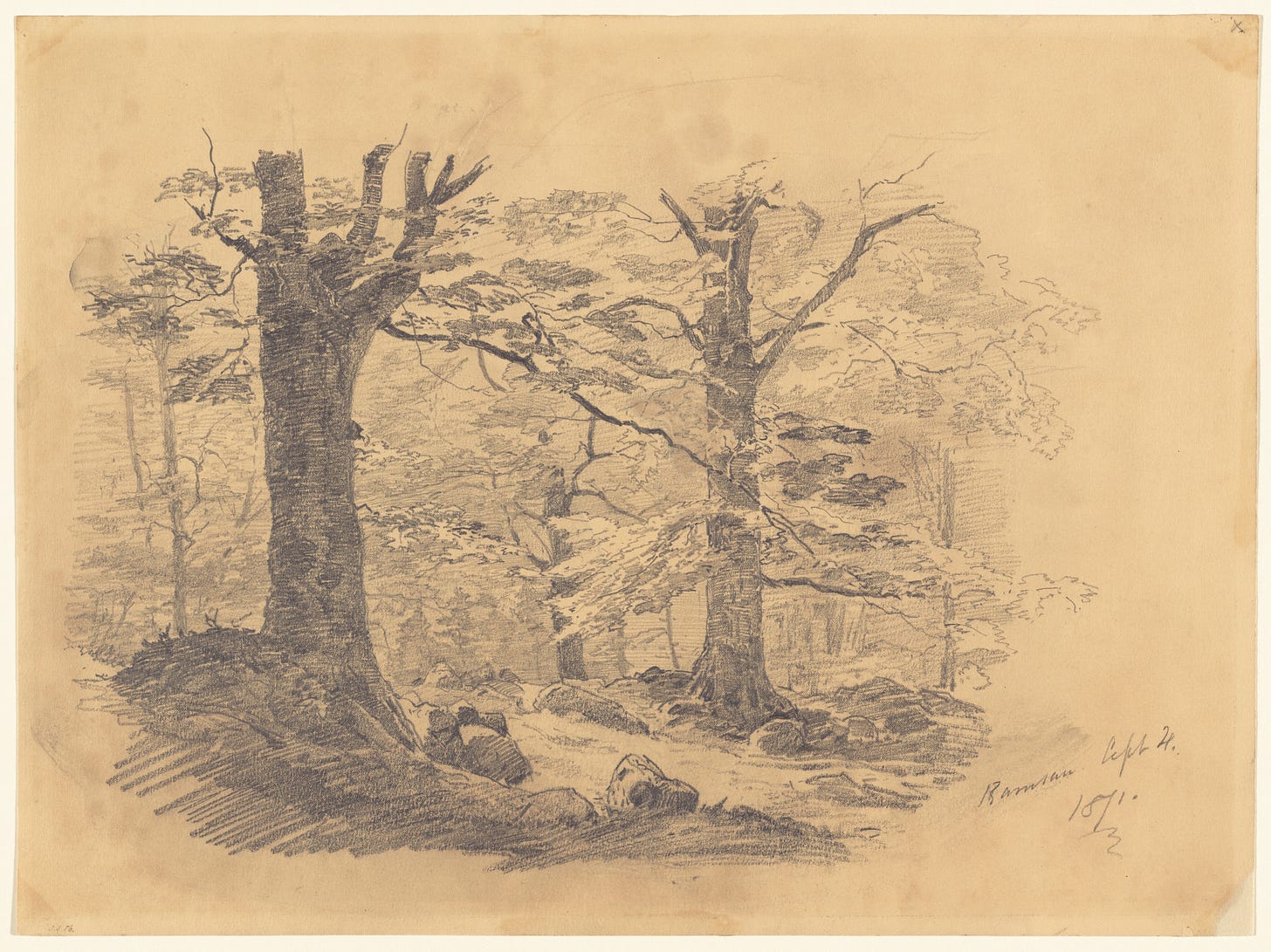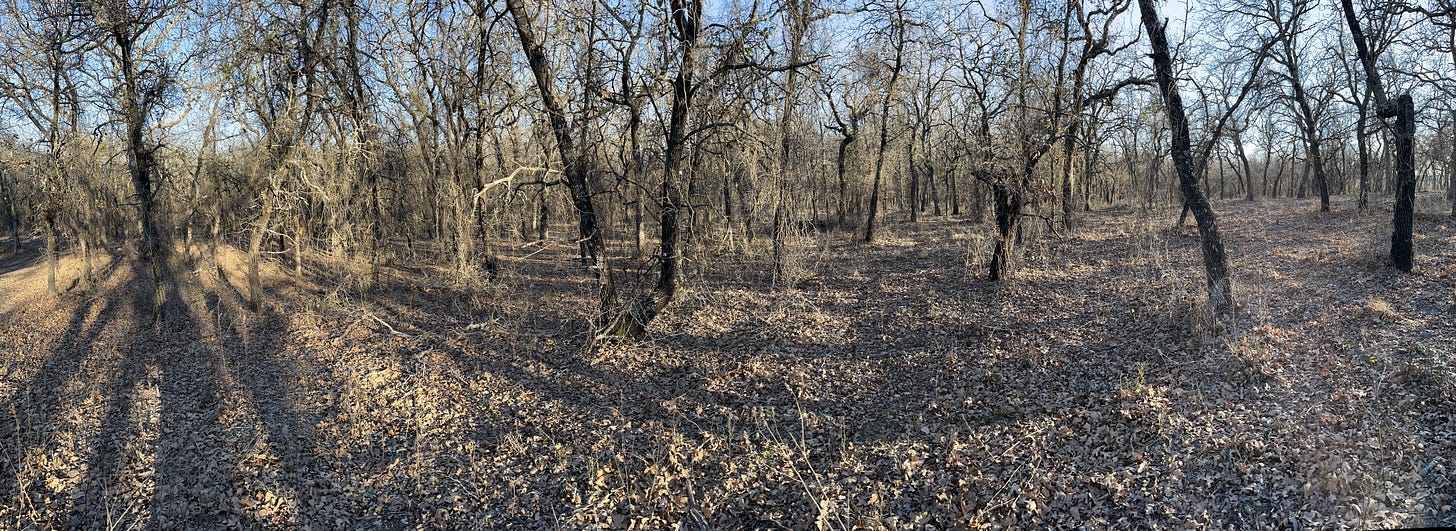What makes a book compelling? Join me in reading good books and honing the craft of writing.
Here’s a lagniappe post, outside of the regular schedule of first and third Fridays of the month:
Not long ago, we stayed far too close to a mountain. It wasn’t a wild mountain, was cut with a few trails and even had a ski lift operating in the summer. Despite it having been a few years since I took on a mountain, I had to climb it, from bottom to peak and hopefully back again.
The woods and the uphill irresistibly drew me. The almost 4000 feet of vertical wasn’t scary, just another challenge to a writer.
Climb I did, finding what solitude there was in the pre-sunrise darkness, in the spaces off trails.
Daylight came and after a few hours, I reached the saddle, followed the ridge to the adjacent peak, found a crew working on the ski equipment. I’d invited others in my family to climb; none took me up on it. With no one to talk to, I was lost in my thoughts. I kept following the ridge to get away from human contact. At the next peak, a TV tower rose above the trees, but I didn’t care, no one else was around. Surrounded by nature and having a window through the trees to the mountains beyond, back to the tower, I sat on a log, ate and drank.
After finishing, I stood, gauged to see if my legs would last another eight miles or so and, not wanting to backtrack, figured I’d descend the back of the mountain. I turned and saw this:
My bubble popped. As I moved closer, I discovered the helicopter pilot sitting inside, waiting as a technician worked in the tower.
Solitude need not be vast, exists wherever we can find it. The expanse of fiction is as broad in scope as the views I had on the mountain. Literary fiction, in particular, holds promise.
After the mountain and the trip ended, back at home, I picked up The Vaster Wilds by Lauren Groff.
Let’s start with the jacket copy. “A servant girl escapes from a colonial settlement into the night.” She enters the wilderness in what becomes a story of survival, or as the jacket copy puts it, “a thrilling adventure story.”
It’s also, “a penetrating fable about trying to find a new way of living in a world succumbing to the churn of colonialism.” In case that’s not enough, the reader is promised, “it tells the story of America in miniature, through one girl at a hinge point in history, to ask how—and if—we can adapt quickly enough to save ourselves.” Meaning she learns lessons about environmentalism that could apply today. Are these deep themes too much to ask a reader?
I was ready to go back into the woods. I couldn’t help but wonder how the story would unfurl. Hmm, picking up on the “story of America” angle, maybe multiple points of view expounding the girl’s experiences, thereby broadening the story into country-wide scope? On the adaptation angle, perhaps the girl learns about surviving from the locals? (I write locals, unsure at this point of whether they’re referred to as Indians inside the story or the modern Native Americans.)
Opening the book, the narration drives the reader directionally. Headed north with french canada (proper nouns aren’t capitalized) in mind, the girl takes in her wilderness surroundings of forests, creeks, rivers. Her location is revealed only by some knowledge of the tribes (thank you Google). One senses she hasn’t previously spent much time, if any, out of the settlement; the wilderness is new to her. In fact, the narration continues to drive forward until relatively deep into the story, when it flashes back. It’s through the flashbacks we learn her backstory of where she came from, what she’s endured, why she fled.
My guesses missed the mark. She has minimal interaction with other characters, travels on her own, only her thoughts to keep her company. Even though she’d never seen a helicopter, may have thought it an abomination in the environment, she would have been less surprised than I was to see that helicopter on the mountain top.
And the prose. The way Groff told the story was intriguing. Her prose serves as writing examples. I’m not particularly experienced in describing literary prose, but I would say the following excerpt alternated between spareness and lushness.
On the spare side:
Midmorning, she looked down and saw a bootprint in the mud. She stopped.
A boot means a foot, she thought.
A booted foot means a christian man.
A booted foot this far north, this far from the french, means a man of her people is following her, that she is being hunted like an animal.
On the lush side, continuing with the scene:
Her heart seized in her chest and she felt such terror that she crouched where she was and made a noise, then hated herself for making the noise.
Crouched here, with her cloak with the hood pulled over her face and her hands covered by the leather gloves, perhaps she would not be visible as a human form; perhaps she would blend with the small brown tussocks in the woods.
But up close she saw even through her terror the small size of the bootprint in the mud, which was her own size. And when she looked up, she saw the same meadow she has passed through some hours earlier but in her dreamings had not fully marked before. And that wispy and leaning pine tree at the edge of she had certainly seen, for, suffused by affection for her imaginary life, she had given its trunk a loving pat as she walked past it.
Filled with action and reaction, of inner thoughts on her solo journey, the prose drives the story and drives us to read.
It’s also enlightening. I’ve never called a clump of grass standing above other vegetation a tussock. A way to build one’s vocabulary is to use it; I’ll try it next time I’m on a hike with some friends.
“Hey, see that tussock over there?”
“The what?”
“Tussock. It means clump of grass. I read it in a book.”
“You need to get some glasses. That’s a pile of cow chips.”
You can easily see how guys walking in a pasture talking doesn’t come close to matching the book’s prose.
Alone or maybe wishing to be alone, it’s hard to beat walking outside, surrounded as much as we can manage by nature.
For the times when we can’t make it, we have an alternative. We can immerse ourselves in the outdoors, reading The Vaster Wilds and books like it. We can decide for ourselves if the big promise by the jacket copy is fulfilled, or if it even matters.
Relish it, skim it, reread, do with it what we wish, Groff offers a gift that’s ours for the taking.
What books do you find offer a feast of prose for the reader? Readers need not feel shy. What makes books more enjoyable is weighing in.
Among outdoor adventure nonfiction books, Into Thin Air, by Jon Krakauer, and Touching the Void by Joe Simpson are suitable for winter reading as they are set in the ice and frozen climes of high altitude climbing.
Outdoor adventure fiction novels seem to be harder to find. Here are a few:
Peter Heller's The River tells of two college buddies on a canoe trip in Northern Canada where fire and strangers take their toll.
The Poisonwood Bible by Barbara Kingsolver is easy to get lose yourself in as you follow a wife and daughters traveling from America to the Belgian Congo in 1959 to be with their missionary husband and father. It’s such a dramatic change, it’s wilderness to them.
What books about the outside have you found?
All the Best,
Geoff
If you enjoyed this post, please hit the heart “❤️” so others can find it. It’s at the bottom and at the top.








